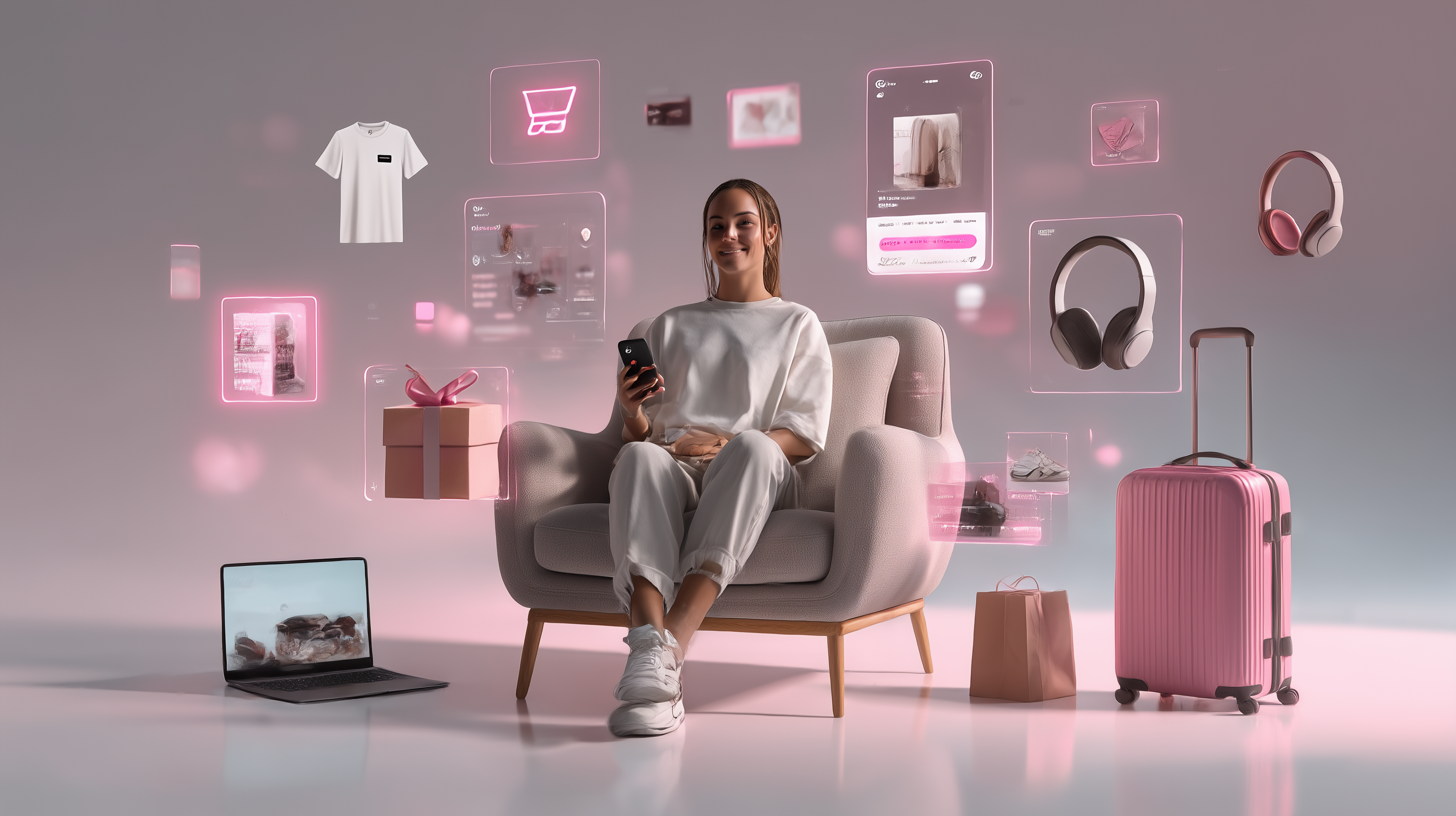By Futurist Thomas Frey
By 2040, the story of retail has flipped on its head. What many believed would be the death of physical stores turned out to be their rebirth. The rise of fully automated warehouses, with near-free delivery of commodities, didn’t end retail—it freed it. The soulless act of stocking shelves and shopping for basics gave way to something far richer: a retail landscape built around human connection, discovery, and experience.
The Great Paradox
In the 2020s, retail analysts predicted the demise of physical stores. Amazon and its competitors perfected robotic fulfillment systems capable of shipping toilet paper, batteries, and socks to your door faster and cheaper than any brick-and-mortar shop could. Everyone assumed this meant the end of retail as a physical experience.
But humans are not designed to thrive on convenience alone. When commodities became fully automated, people craved something else entirely: interaction, artistry, and authenticity. The survivors in retail were not the cheapest. They were the most human.
The New Retail Landscape
Commodity Retail: Dead and Buried
By 2037, the last traditional big-box store closed. Selling commodities in physical spaces became pointless. Robot warehouses delivered everything cheaper, faster, and more reliably. Nobody missed spending their weekends navigating aisles of toilet paper or cereal boxes.
Experiential Retail: The Explosion
Yet, physical retail didn’t shrink—it expanded. Between 2025 and 2040, retail floor space grew 23%, but its function transformed completely.
1. The Culinary Renaissance (1.2 million new jobs):
Grocery stores disappeared, replaced by food halls, cooking experience centers, and hyper-local markets. Customers no longer grabbed boxes off shelves—they learned to cook, sampled artisan creations, and picked vegetables grown in vertical farms inside the market itself. Food shopping shifted from a chore to a leisure activity, with the average American now spending 90 minutes a week in food spaces, double the time they once spent in supermarkets, but describing it as “quality time.”
2. The Craftsmanship Explosion (890,000 new jobs):
Stores became stages for craft. Furniture was built before your eyes. Fashion ateliers tailored clothing on the spot. Glassblowers, potters, and metalworkers turned retail into live performance. Customers didn’t just buy—they witnessed, participated, and connected with the makers. The product wasn’t just an object; it came with a story.
3. The Experience Economy (2.3 million new jobs):
Retail reinvented itself as entertainment, education, and wellness. VR arcades merged with physical play spaces. Escape rooms and interactive theaters thrived in old shopping malls. Class-based stores offered everything from woodworking to music lessons. Spas and “human optimization centers” combined wellness experiences with retail offerings. Shoppers no longer asked, “What can I buy here?” but rather, “What can I do here?”
The Authenticity Premium
By 2040, consumers gladly paid 300–800% more for handcrafted, experiential goods. A handmade jacket from a local designer wasn’t competing with algorithmic-fit clothing delivered by drone. It offered connection, uniqueness, and story. Retail had rediscovered its most ancient truth: people will always value the human touch.
The Employment Transformation
Retail employment didn’t collapse—it soared. In 2025, 15.3 million Americans worked in retail, mostly stocking shelves and manning cash registers for median wages of $13.50. Job satisfaction was abysmal at 28%.
By 2040, retail employed 18.7 million people, but in roles as artisans, chefs, designers, performers, and educators. Median wages rose to $27.50, and job satisfaction jumped to 74%. The difference? Retail workers were no longer treated as human inventory systems. They became creators of experiences.
The Community Restoration
The greatest surprise was not economic but social. Experiential retail rebuilt communities as third places where people gather, connect, and belong. Food halls became the new Main Streets. Maker spaces doubled as community workshops. Retail spaces integrated with parks, event stages, and performance areas.
The impact was profound:
- Loneliness rates plummeted as retail became a hub for human connection.
- Community engagement rose as people got to know their neighbors through shared classes and events.
- Mental health improved as in-person interaction replaced the isolation of digital-only life.
The retail apocalypse of the 2020s became a retail resurrection of the 2040s.
The Generational Surprise
In 2025, skeptics said Gen Z and digital natives would never embrace physical retail. By 2040, those same generations were its most loyal customers. 78% of Gen Z reported weekly visits to experiential retail spaces. They craved authenticity because they grew up surrounded by algorithms and screens. They didn’t want to buy pottery online—they wanted to learn pottery in person.
The Economic Model That Worked
The old retail model was a race to the bottom: thin margins, brutal price wars, and soulless stores. The new model thrives on differentiation: charging for experiences, not just goods. Margins of 20–40% are now common, sustained by consumers who aren’t just buying products—they’re buying meaning.
The Cultural Transformation
Perhaps the most radical shift is how people relate to “stuff.” Commodities became invisible, handled by unseen robots. But crafted goods, local food, and human-centered experiences became cherished. The act of shopping became less about acquisition and more about connection.
What many feared would be the death of retail turned out to be its rebirth into something older, truer, and more human.
Final Thoughts
By 2040, we see the retail apocalypse for what it really was: the death of a distorted model that never should have existed. Humans were never meant to spend hours in fluorescent aisles pushing carts full of toilet paper. That version of retail was an aberration of the 20th century.
What replaced it was not sterile automation, but vibrant community. Retail became a stage for creativity, a platform for human connection, and a cornerstone of culture. The robots work in the dark warehouses. The humans thrive in the light of shared experience.
Retail didn’t die. It finally came alive.
Read more on related topics:


